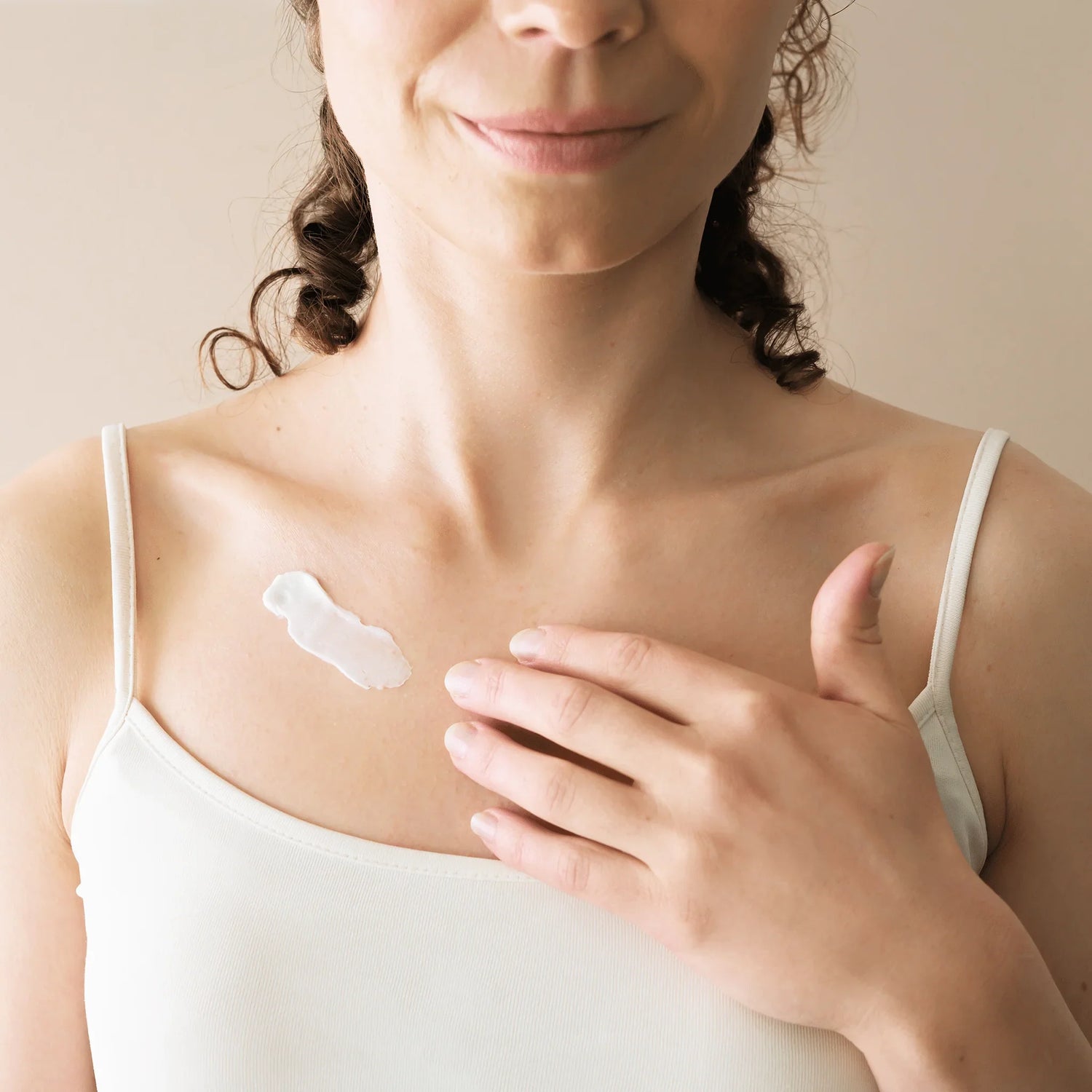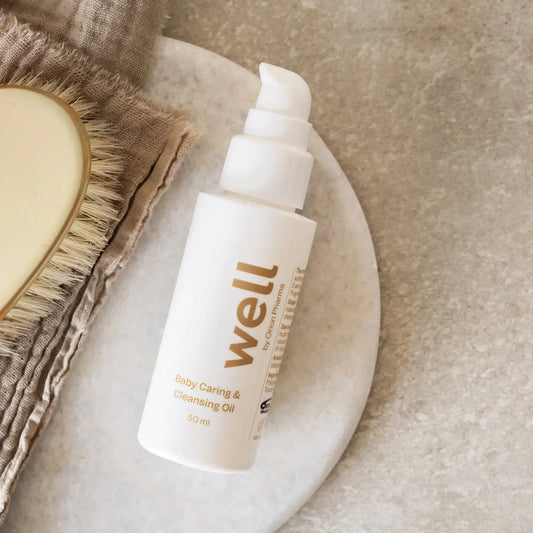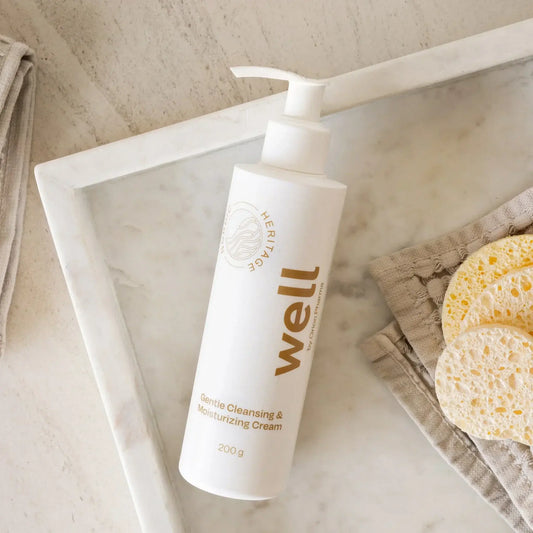
What is cradle cap?
Share
Cradle cap, medically known as infantile seborrheic dermatitis, is a common and harmless skin condition that affects many babies in their first months of life. While it may look concerning, cradle cap is typically painless, non-itchy, and resolves on its own with gentle care, so don’t worry! If you still want to try to remove it, we have the right products and guidance for you.
In this blog article we want to help you understand the cradle cap better and offer gentle tips on how to treat it.
What is cradle cap?
Cradle cap appears as greasy, yellowish or white scales on a baby’s scalp, often forming crusty patches. It can also extend to the eyebrows, eyelids and ears. It resembles dandruff somewhat, but it is not the same thing.
Despite its appearance, cradle cap is not contagious, not caused by poor hygiene, and doesn’t bother your baby. It’s not unusual for cradle cap to appear also in older children, as it can occasionally remain on the scalp for an extended period, and that’s totally okay.
What causes cradle cap?
The exact cause isn’t fully understood, but research suggests a combination of factors:
- Overactive sebaceous glands, stimulated by maternal hormones passed to the baby before birth
- Malassezia, a naturally occurring yeast on the skin, may play a role in the development of cradle cap
These factors lead to excess oil production, which traps dead skin cells and forms the characteristic scales.
How to treat cradle cap safely
Cradle cap doesn’t need to be treated. Most of the time your little one won’t even notice it, but if you feel like trying to remove it, you can try these tips:
- Gently apply a thin layer of our Baby Caring & Cleansing Oil on your baby’s scalp and let it sit for about 15-20 minutes. It softens the cradle cap and helps it come off a bit more easily.
- Softly brush your baby's scalp with a gentle baby brush or a fine-toothed comb.
- Finish by washing out the oil with water. Usually, washing with just water is enough, but if your child has a lot of hair, you can also use a small amount of mild, fragrance-free baby shampoo or cleansing emulsion. This helps remove the oily residue more effectively from the hair. Our Gentle Cleansing & Moisturizing Cream is perfect for this.
- If there’s still a lot of cradle cap on your baby’s scalp, you can repeat the treatment after a few days.
Don’t use regular shampoos on your baby and avoid picking at the scales, as these can irritate the skin or increase the risk of infection.
When to see a doctor
You should consult your pediatrician if:
- The cradle cap spreads beyond the scalp.
- The skin becomes red, swollen, or starts to ooze.
- Home treatments don’t improve the condition after a few weeks.
In some cases, a doctor may recommend a low-potency hydrocortisone cream or antifungal shampoo like ketoconazole.
Cradle cap is a normal part of infancy for many babies. With gentle care, trusted products, and reliable information, you can help your baby’s skin stay healthy and comfortable. At Well by Orion Pharma, we’re here to support you every step of the way.



